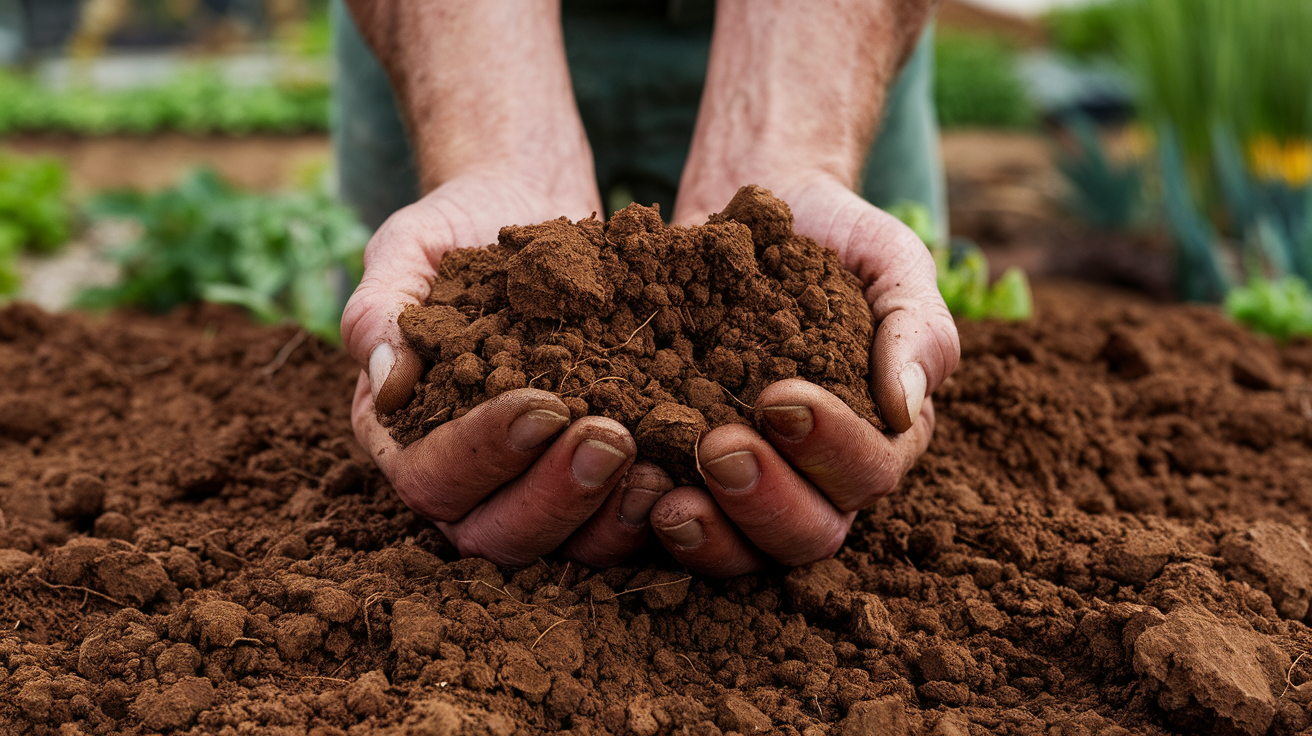Welcome to Rhys Garden, your trusted source for all things gardening! Today, we’re diving into the world of organic spent mushroom compost, a true gem in the realm of soil amendments. Whether you’re a seasoned green thumb or just starting your gardening journey, this powerful resource can revolutionize your plant care routine and help your garden flourish like never before.
What is Organic Spent Mushroom Compost?
Organic spent mushroom compost, often referred to as SMC, is a nutrient-rich byproduct of mushroom cultivation. After mushrooms have been harvested, the remaining substrate – a blend of organic materials like straw, hay, corn cobs, and horse or chicken manure – becomes a valuable resource for gardeners.
The Creation Process
- Substrate preparation
- Mushroom growth
- Harvesting
- Composting
- Sterilization
This process results in a dark, crumbly substance teeming with beneficial microorganisms and essential nutrients. It’s nature’s way of recycling, turning waste into a gardener’s gold!
Benefits of Using Organic Spent Mushroom Compost

Soil Structure Improvement
Organic spent mushroom compost works wonders for soil structure. It enhances:
- Water retention
- Aeration
- Drainage
These improvements create an ideal environment for root growth and nutrient uptake.
Nutrient-Rich Composition
SMC is packed with essential nutrients that plants crave:
- Nitrogen (N)
- Phosphorus (P)
- Potassium (K)
- Calcium (Ca)
- Magnesium (Mg)
These nutrients are released slowly, providing a steady supply for your plants throughout the growing season.
pH Balancing Act
Most plants prefer slightly acidic to neutral soil. Organic spent mushroom compost typically has a pH between 6.0 and 7.5, making it an excellent pH balancer for your garden beds.
Microbial Powerhouse
The composting process cultivates a diverse community of beneficial microorganisms. These tiny helpers:
- Break down organic matter
- Improve nutrient availability
- Enhance plant resistance to diseases
How to Use Organic Spent Mushroom Compost in Your Garden
As a Soil Amendment
Mix organic spent mushroom compost into your existing soil to improve its quality:
- Spread a 2-3 inch layer of SMC over your garden bed.
- Use a garden fork or tiller to incorporate it into the top 6-8 inches of soil.
- Water thoroughly to help settle the mixture.
As a Mulch
SMC makes an excellent mulch for both ornamental and edible plants:
- Apply a 2-inch layer around plants, keeping it away from stems to prevent rot.
- Water well to help it settle.
- Replenish as needed throughout the growing season.
In Container Gardening
For potted plants and container gardens:
- Mix 1 part SMC with 3 parts potting soil.
- Use this blend to fill containers or repot plants.
As a Compost Tea
Create a nutrient-rich liquid fertilizer:
- Fill a burlap sack with SMC.
- Submerge in a bucket of water.
- Let it steep for 24-48 hours.
- Use the resulting “tea” to water your plants.
Precautions and Best Practices
While organic spent mushroom compost is generally safe and beneficial, there are a few things to keep in mind:
Salt Content
Fresh SMC can have high salt levels. To avoid potential issues:
- Age the compost for 6-12 months before use.
- Leach fresh compost by watering thoroughly and allowing it to drain.
- Use in moderation, especially with salt-sensitive plants.
Nutrient Balance
SMC is rich in certain nutrients but may lack others. Consider:
- Conducting a soil test before extensive use.
- Supplementing with additional fertilizers if needed.
- Rotating compost sources to ensure a diverse nutrient profile.
Potential Contaminants
To ensure the quality of your SMC:
- Source from reputable suppliers.
- Inquire about the composting process and any additives used.
- Look for organic certification if that’s a priority for your garden.
DIY Organic Spent Mushroom Compost
For the adventurous gardener, creating your own SMC can be a rewarding process:
Materials Needed:
- Straw or hay
- Horse or chicken manure
- Gypsum
- Mushroom spawn
Steps:
- Mix straw, manure, and gypsum.
- Moisten the mixture.
- Add mushroom spawn.
- Allow mushrooms to grow and harvest.
- Compost the remaining substrate.
While this process requires time and effort, it provides a deeper understanding of the SMC creation process and ensures a truly organic product for your garden.
Organic Spent Mushroom Compost vs. Other Soil Amendments
Let’s compare SMC to other popular soil amendments:
SMC vs. Traditional Compost
- SMC is often more nutrient-dense.
- Traditional compost may have a wider variety of ingredients.
- Both improve soil structure and microbial activity.
SMC vs. Peat Moss
- SMC is more sustainable and renewable.
- Peat moss is more acidic, suitable for acid-loving plants.
- SMC provides more nutrients compared to peat moss.
SMC vs. Synthetic Fertilizers
- SMC releases nutrients slowly, reducing the risk of nutrient burn.
- Synthetic fertilizers provide a quick nutrient boost but may leach more easily.
- SMC improves soil structure, while synthetic fertilizers do not.
Success Stories: Gardens Transformed by Organic Spent Mushroom Compost
Case Study 1: The Struggling Vegetable Patch
Sarah, an urban gardener in Seattle, was struggling with poor yields in her vegetable garden. After incorporating SMC:
- Tomato yields increased by 30%
- Soil water retention improved, reducing watering frequency
- Pest problems decreased significantly
Case Study 2: The Ornamental Garden Revival
John, a passionate flower gardener in Florida, used SMC to rejuvenate his struggling rose bushes:
- Blooms became larger and more vibrant
- Plants showed increased resistance to black spot fungus
- Soil structure improved, reducing compaction issues
These success stories highlight the transformative power of organic spent mushroom compost in diverse gardening scenarios.
Environmental Impact of Using Organic Spent Mushroom Compost
Waste Reduction
By using SMC, gardeners contribute to:
- Reducing landfill waste
- Promoting circular economy practices
- Supporting sustainable agriculture
Carbon Sequestration
SMC helps sequester carbon in the soil, contributing to climate change mitigation efforts.
Reduced Chemical Use
The nutrient-rich nature of SMC can reduce reliance on synthetic fertilizers, leading to:
- Decreased chemical runoff
- Improved water quality in local ecosystems
- Enhanced soil biodiversity
Frequently Asked Questions About Organic Spent Mushroom Compost
Is organic spent mushroom compost safe for all plants?
While SMC is generally beneficial, some plants may be sensitive to its high nutrient content or slightly alkaline pH. Always research your specific plants’ needs and start with small applications.
How often should I apply organic spent mushroom compost?
For most gardens, an annual application in spring or fall is sufficient. However, heavy feeders may benefit from more frequent applications.
Can I use organic spent mushroom compost for seed starting?
It’s best to use a lighter seed starting mix for germination. SMC can be too nutrient-rich for delicate seedlings and may inhibit germination.
Does organic spent mushroom compost attract pests?
Properly composted SMC should not attract pests. In fact, it often helps deter certain pests due to its beneficial microbial content.
How long does organic spent mushroom compost last in the soil?
The benefits of SMC can last for several months to a year, depending on soil conditions and plant uptake.
Expert Opinions on Organic Spent Mushroom Compost
Dr. Emily Chen, Soil Scientist at the University of California, Davis, states: “Organic spent mushroom compost is an excellent soil amendment that not only provides essential nutrients but also improves soil structure and microbial diversity. Its use in gardens can lead to healthier plants and more sustainable growing practices.”
John Smith, Master Gardener and author of “The Composting Companion,” adds: “In my 30 years of gardening experience, I’ve found few soil amendments as versatile and beneficial as organic spent mushroom compost. It’s truly a game-changer for both novice and experienced gardeners.”
Conclusion: Embracing the Power of Organic Spent Mushroom Compost
As we’ve explored throughout this comprehensive guide, organic spent mushroom compost is a versatile, nutrient-rich, and environmentally friendly soil amendment that can transform your garden. From improving soil structure to boosting plant health and reducing waste, the benefits of SMC are truly remarkable.
At Rhys Garden, we believe in the power of sustainable, organic gardening practices. By incorporating organic spent mushroom compost into your gardening routine, you’re not just nurturing your plants – you’re contributing to a healthier ecosystem and a more sustainable future.

Related Posts
The Ultimate Guide to Fertilizing For Maple Trees
What Fertilizer Is Highest In Nitrogen? Boosting Your Garden’s Green Growth
The Best Fertilizer for Fruit Plants: Nurturing Your Garden’s Sweet Success